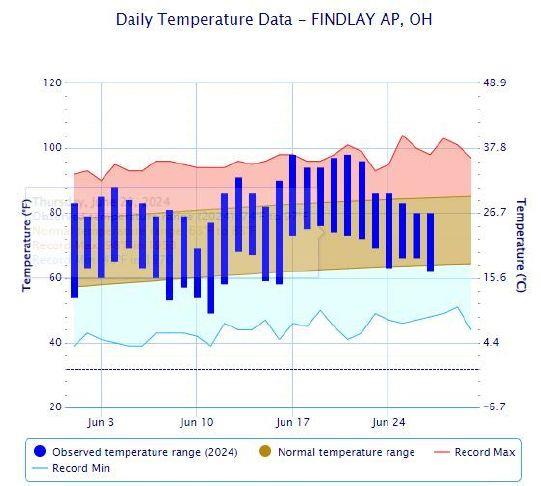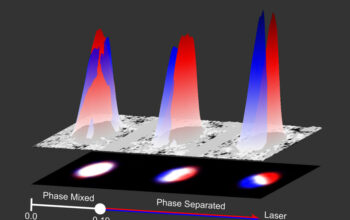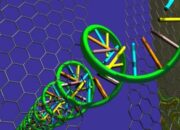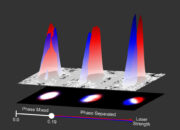In the realm of condensed matter physics, the pursuit of superconductivity has long intrigued scientists and researchers alike. This phenomenon, where a material exhibits zero electrical resistance and expels magnetic fields, traditionally requires frigid temperatures beyond the reach of conventional conditions. However, recent strides in the study of fullerene compounds—specifically, buckyballs—have illuminated a path toward achieving superconductivity at comparatively elevated temperatures. This exploration not only challenges established paradigms within the field but also unveils a myriad of possibilities that transcend our understanding of material science.
To comprehend the significance of achieving superconductivity at higher temperatures, it is imperative to delve into the intricate relationship between molecular structure and electron behavior. Buckyballs, or C60, are spherical arrangements of carbon atoms resembling a soccer ball, forming a closed-shell molecule with unique properties. These structures exhibit a remarkable ability to host electrons in their internal architecture, a characteristic that primes them for various applications, including superconductivity. The juxtaposition of geometry and electron dynamics provides a fertile ground for investigating how these fascinating molecules can interact to produce superconductive states.
The emergence of high-temperature superconductivity is often likened to scoring a goal in a tightly contested match. In this metaphor, the goal post represents the threshold of critical temperature, a parameter that must be exceeded for superconductivity to materialize. Traditional superconductors, typically metallic in nature, often require cooling to near absolute zero. In contrast, the pursuit of higher-temperature superconductors, such as those derived from organic materials or cuprates, resembles an audacious attempt to net a goal from a considerable distance—an endeavor that may very well redefine the playing field.
As research delves deeper into the electronic interactions within buckyballs and their composite materials, a persistent theme emerges: the role of electron-phonon coupling. This phenomenon describes the interaction between electrons and lattice vibrations within a material. For conventional superconductors, these interactions facilitate the formation of Cooper pairs—electron pairs that glide through the lattice without resistance, akin to skilled athletes maneuvering effortlessly across a field. In the case of buckyballs, the complexities of electron coupling present both challenges and opportunities. The highly symmetrical nature of C60 introduces unique vibrational modes that may foster an environment conducive to superconductivity at elevated temperatures.
Researchers have employed various methodologies and experimental techniques to probe the electronic properties of buckyballs. Studies utilizing advanced spectroscopic techniques, such as angular-resolved photoemission spectroscopy (ARPES), have revealed vital insights into the energy bands and possible superconducting phases of these materials. It is within these spectra that the resonance of hope resonates, teasing researchers with the allure of practicality. To capitalize on these findings, efforts have focused on synthesizing hybrid materials that combine buckyballs with conductive matrixes, creating a symphony of molecular interactions where superconductive behavior can emerge at more attainable temperatures.
The implications of achieving superconductivity at higher temperatures are profound, spanning a multitude of scientific domains. One of the most significant advantages would be the potential for revolutionizing energy transmission and storage systems. Current superconducting technologies, despite their remarkable capabilities, are hampered by the prohibitive costs and logistical challenges associated with cooling to cryogenic temperatures. Should buckyballs manifest superconductive properties at higher temperatures, energy grids could operate with drastically reduced losses, fostering a leap toward sustainable energy solutions. Moreover, applications in quantum computing, magnetic levitation, and advanced medical imaging techniques are all poised for transformation in the light of these newer materials.
However, the journey toward achieving practical superconductivity through buckyballs is fraught with complexity. Challenges associated with material stability, scalability, and isolation of the superconductive phases remain pivotal hurdles. In addition, the intricate interplay between chemical composition and electronic properties necessitates a paradigmatic shift in how researchers formulate hypotheses and conduct experiments. The potential for novel carbon allotropes, such as graphene and carbon nanotubes, adds layers of intrigue, as hybrid materials may alter the superconductive landscapes in unforeseen ways.
Yet, in academia, one must embrace the notion of serendipity: the unexpected yet profound discoveries that occur when pursuing a complex problem. The research community stands on the precipice of unveiling further secrets within the fullerene family. Stochastic processes within materials may yield unexpected superconducting states, emphasizing the need for interdisciplinary approaches combining physics, material science, and chemistry.
In conclusion, the exploration of superconductivity through the lens of buckyballs embodies the essence of scientific inquiry: navigating uncertainties while striving toward innovative breakthroughs. The interplay of molecular structures and electron dynamics is akin to an elaborate ballet of particles, where every movement holds the potential for discovery. As scholars continue to traverse this exhilarating terrain, the prospect of higher-temperature superconductivity not only beckons with enticing applications but also promises to reshape the landscape of condensed matter physics for generations to come. The goal of achieving superconducting states within buckyballs stands not merely as a scientific aspiration but as an emblem of human ingenuity and relentless pursuit of knowledge.










